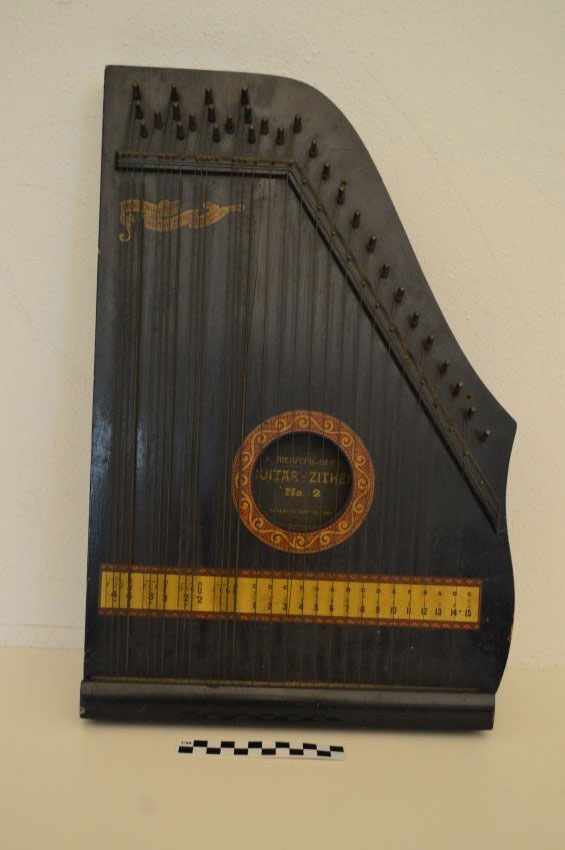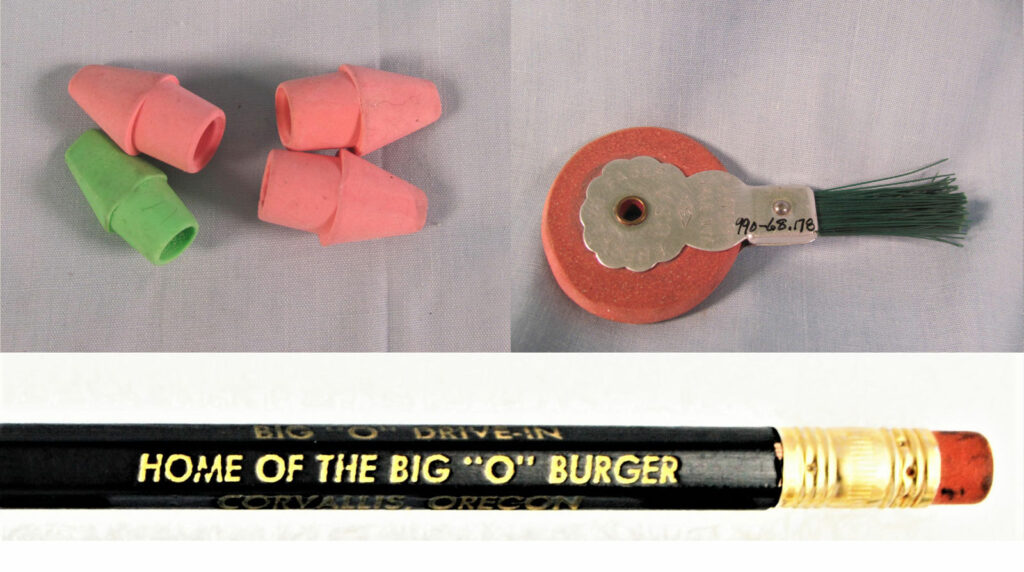Next Sunday, Music at the Museum will feature the Oregon Koto Kai Ensemble. What exactly is a koto?

The koto, often called the national instrument of Japan, is one of many related stringed instruments in the zither category. The Benton County Historical Society’s collection does not have any koto but does contain several zithers, such as this one dated 1894.

What do these two instruments have in common? Both feature strings stretched across a flat wood body and both are played by plucking the strings. Koto are typically made of paulownia, a light, fine-grained, warp-resistant wood. The museum does not have a record of what type of wood was used for the zither.
Although these instruments are in the same family, here are also some clear differences. The koto are larger: the typical koto is 72 inches long whereas the zither pictured above is only about 19 inches long. The koto has 13 strings; the zither has 28. Sometimes the koto might have 17; the zither can have up to 42 strings. Koto strings are traditionally made of silk, although some now used plastic. Zither strings are metal.
There are several different types of zithers. The one in the museum’s collection is a chord or guitar zither which was very popular in the United States in the late 1800s and early 1900s. It features strings in groups of three on the left side (the chord strings); the individual strings on the right are used for the melody. This type of zither does not have frets. The koto features movable bridges (the white plastic pieces).
To hear the sound of the koto, come to the concert at the Corvallis Museum on Sunday, September 17 at 2:00.



